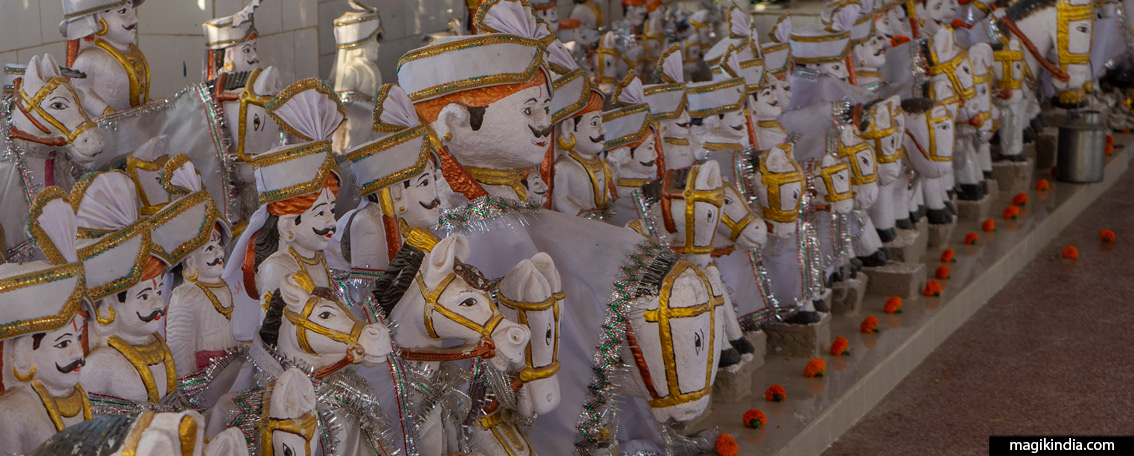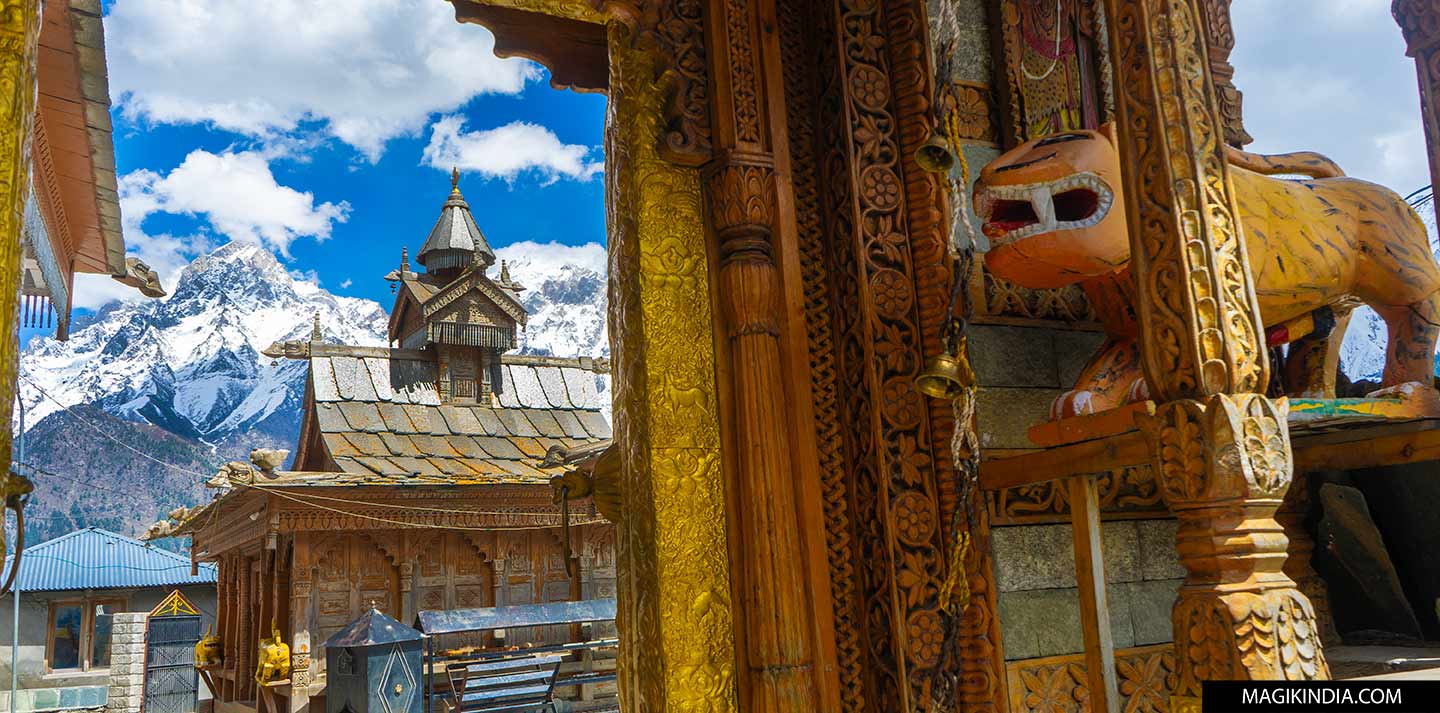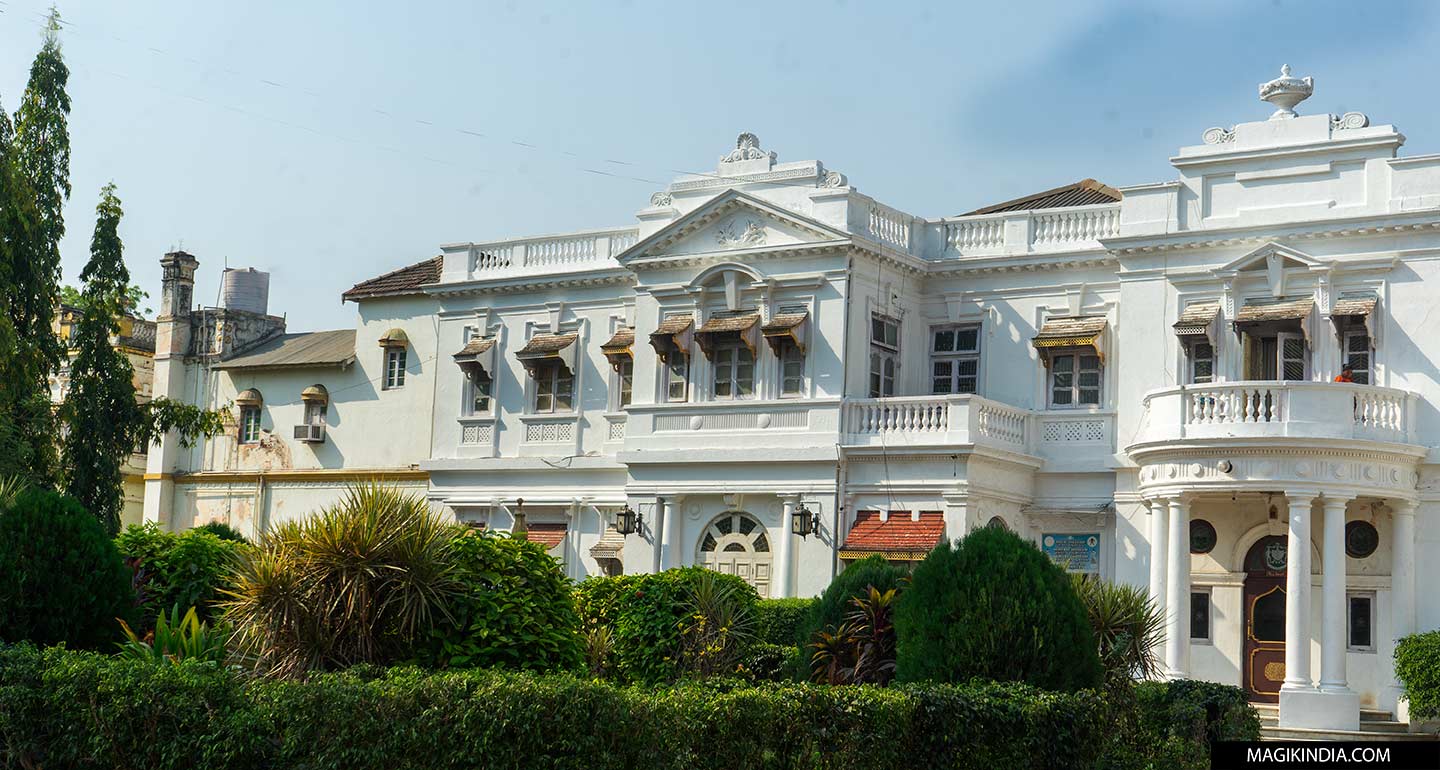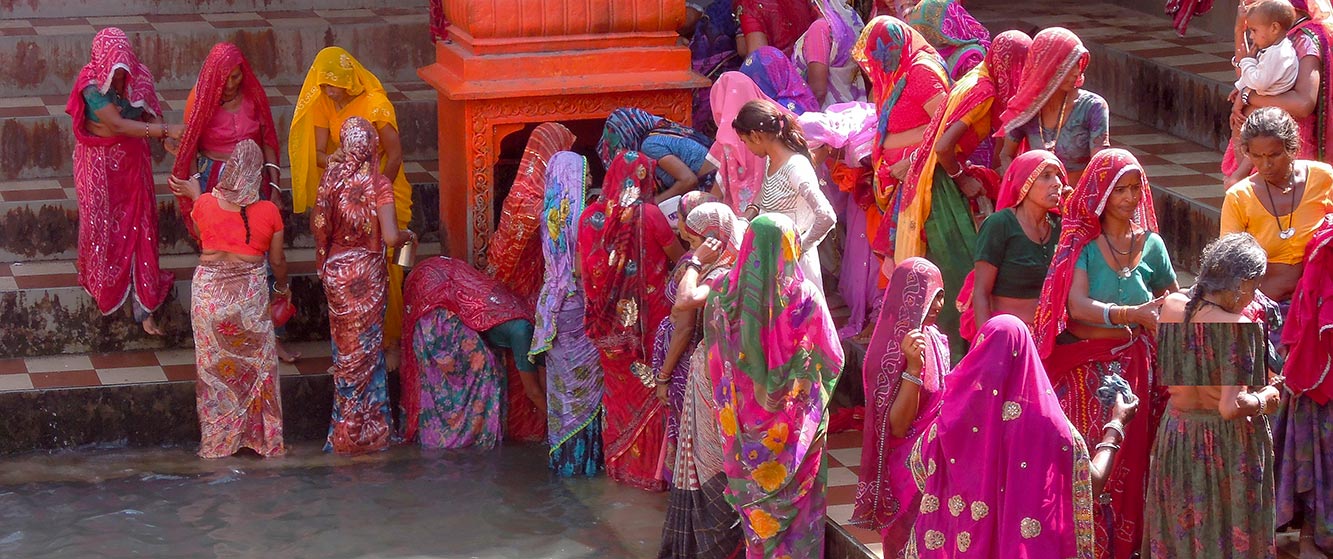Jakh Botera, the 72 white knights of Kutch
Seeing this alignment of horsemen, one would be tempted to draw a parallel with the valiant warriors of the Momaji temples of Rajasthan. But that’s another story here, the one told to me by Krutarth Sinh Jadeja, while I was staying in his elegant century-old mansion in Devpar. What is the part of legend and reality in the history of the Jakh Botera? It is very likely that we will never know!
The Jakhs Botera are temples specific to the region of Kutch (Gujarat) which are dedicated to the worship of 72 warriors, or more precisely, 71 men and a woman, Sayari, who is their sister.
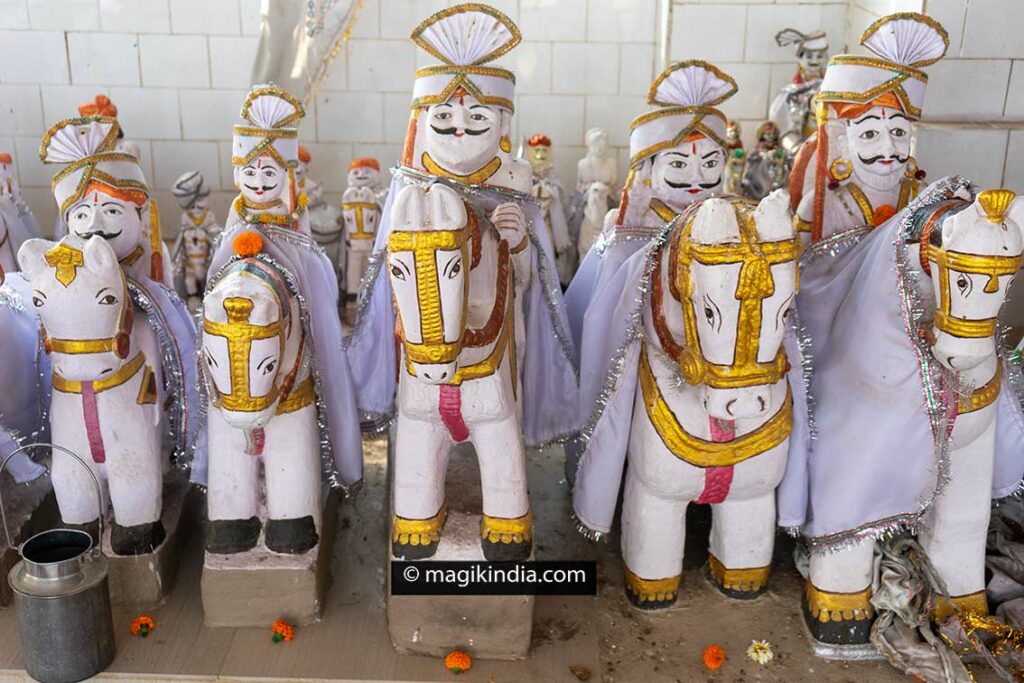
The Jakh Botera are said to have arrived by sea. They were shipwrecked at Jakhau on the west coast of Kutch in the mid-12th century CE. Some historians link them to Persia, others to the Byzantine Empire or Syria.
It is said that these warriors were tall, fair complexioned and possessed an advanced culture, particularly in terms of science. They would have brought with them Unani medicine which would effectively treat the malaria which was rampant in the region. For this reason, the locals will attribute superhuman powers to them.
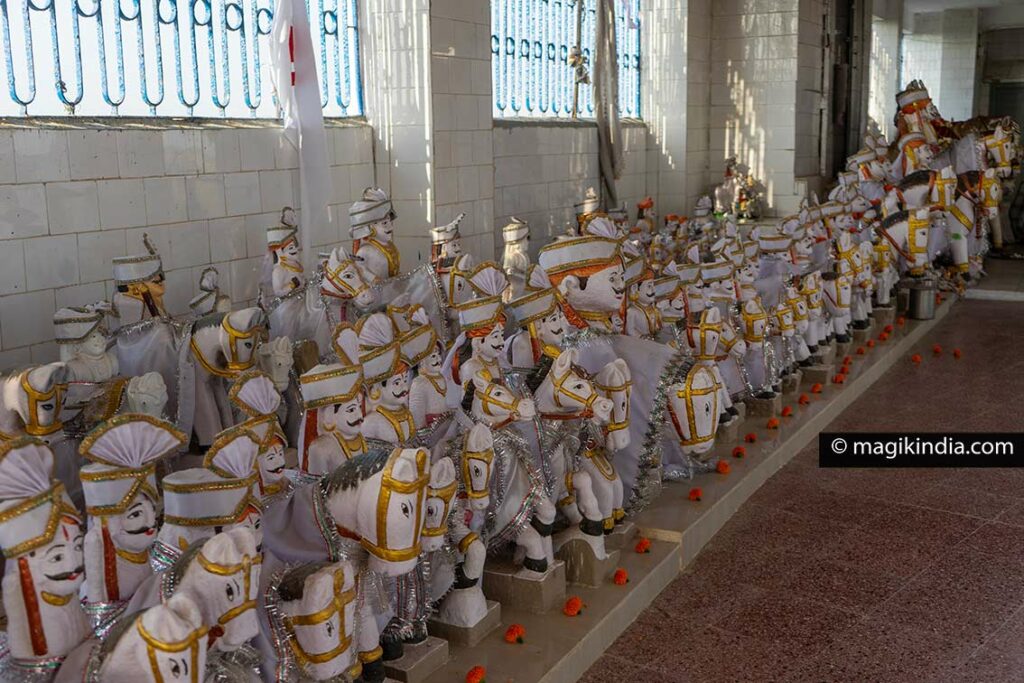
Unani is a traditional medicine believed to date back to ancient Egypt and Mesopotamia. Hippocrates and Pythagoras recorded the principles which were developed in the 12th century by scholars from the Arab world. During the Muslim conquests of India that began in the 8th century CE, Unani coexisted harmoniously with indigenous Ayurvedic medicine.
The Hamdard University, Delhi, is one of the few institutes in Asia that conducts in-depth research on Unani medicine and teaches it.
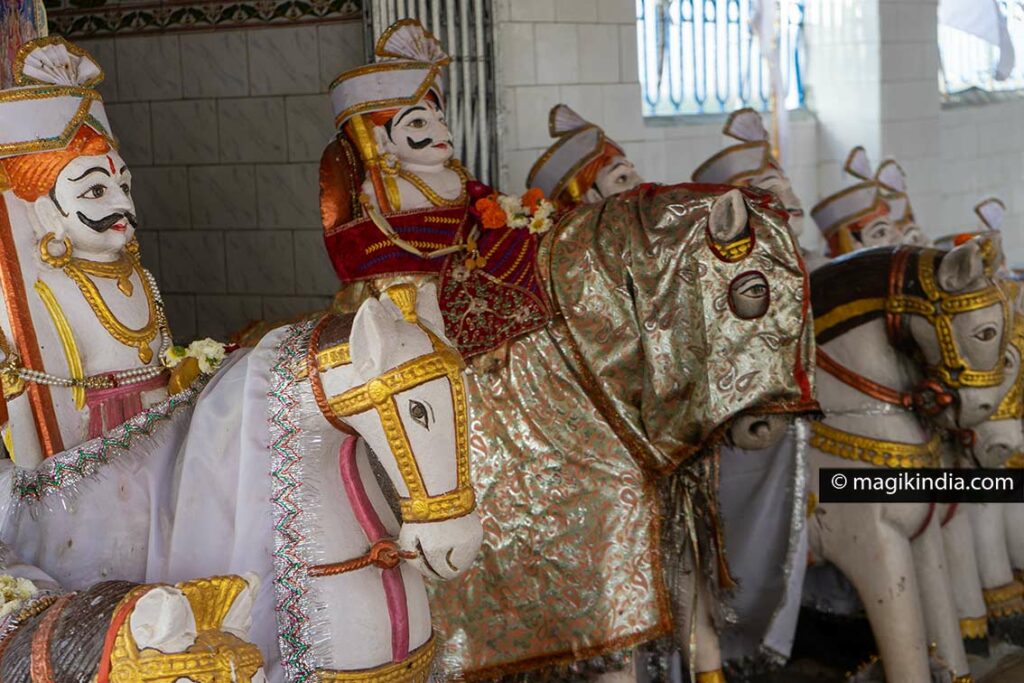
In a neighboring village, in Punvaranogadh (near the present-day village of Manjal, south of Devpar) lived a tyrant king. His queen, who had heard of the miraculous powers of the Jakh, asked them to grant her prayer to have a child. She had an underground passage dug from her palace to Kakadbhit hill to meet them in person. The jakh replied that his prayer could not be answered without the help of special rituals performed in the palace itself.
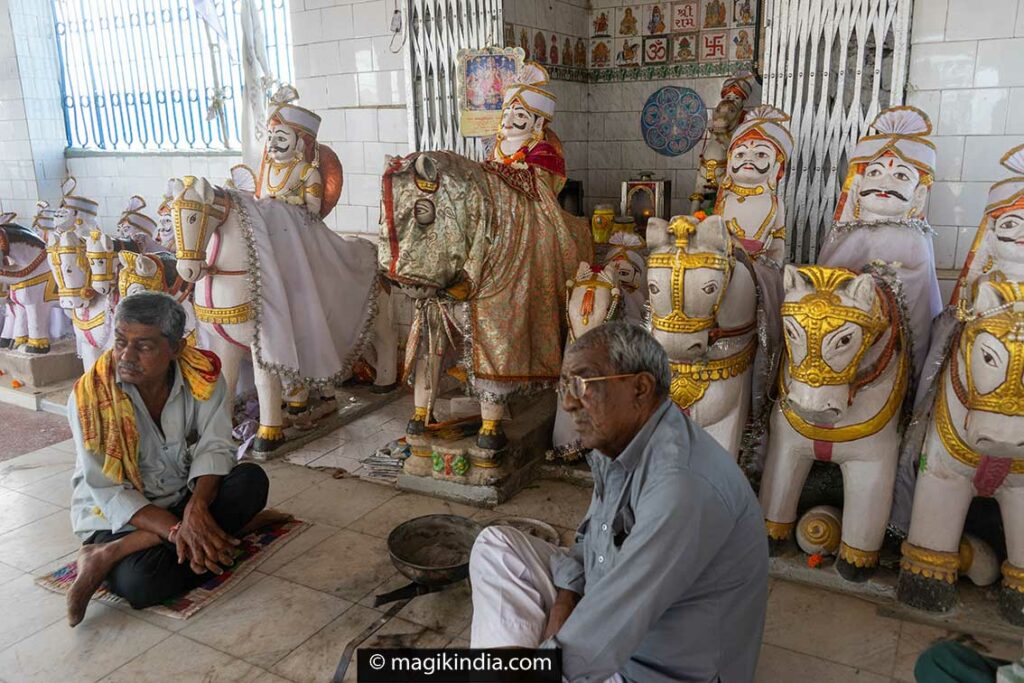
With the consent of the queen, seven Jakh entered the palace via the underground passage to perform the rites. But, when King Punvar heard that there were strange men in the ladies’ apartments, he entered by force, seized the holy warriors and tortured them for several days. Touched by their suffering, a palace barber offered to take the place of one of them. The freed jakh ran away and went to warn the other warriors. The 72 Jakhs then marched towards Punvaranogadh and during the siege a stone fell from the roof of the palace and broke the king’s head. The Jakhs cursed the city which gradually fell into ruin.
Later, temples dedicated to the Jakh Botera were erected to commemorate their exploits and wisdom.
These warriors are generally worshiped by the Sanghar community, who are Hindus. Some of them believe that the seventy-two horsemen are actually Yaksas, demigods who appear in Hinduism, but also in Buddhism and Jainism.
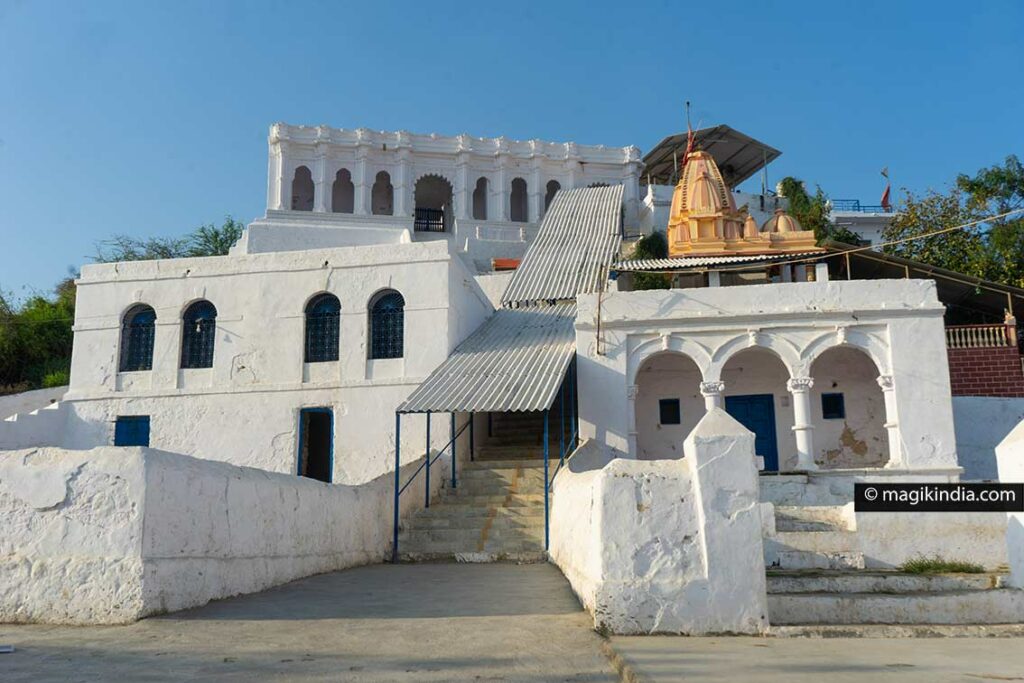
The temple of the Jakh Botera of the legend is located near Devpar, 50 km north of Bhuj, the capital of Kutch district. It stands high on Kakadbhit Hill and from the outside it looks like a small palace-fortress. Inside, 72 statues of white horsemen are lined up in two rows. In the center, a lead horseman stands before a Hindu altar; two seated men officiate and tell the story of the Botera to anyone who will listen… In the local dialect.
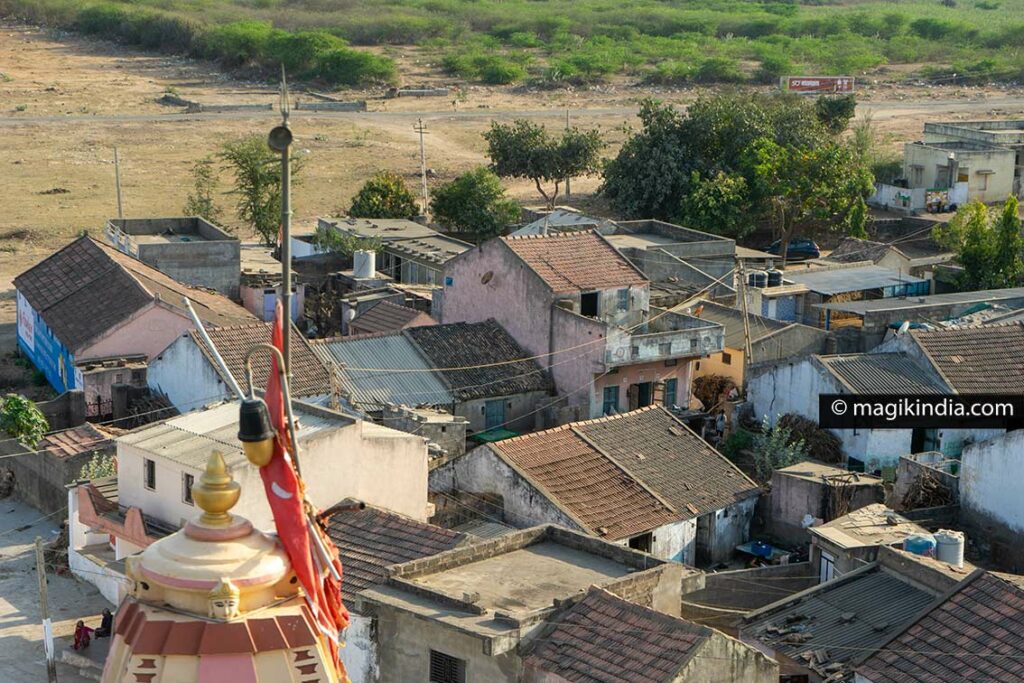
The Jakh temple is honored during the annual “Mota Jakh no Melo” fair which takes place on the foothills of Kakadbhit hill. It is organized on the second Monday of the Hindu month of Bhadrapad (September-October) and is considered one of the largest fairs in Kutch, hence its name “mini Tarnetar” which is the largest fair in Gujarat. There are hundreds of craft stands as well as everyday products. In the evening, cultural programs including Garba dances (Gujarati folk dances) are on the menu.
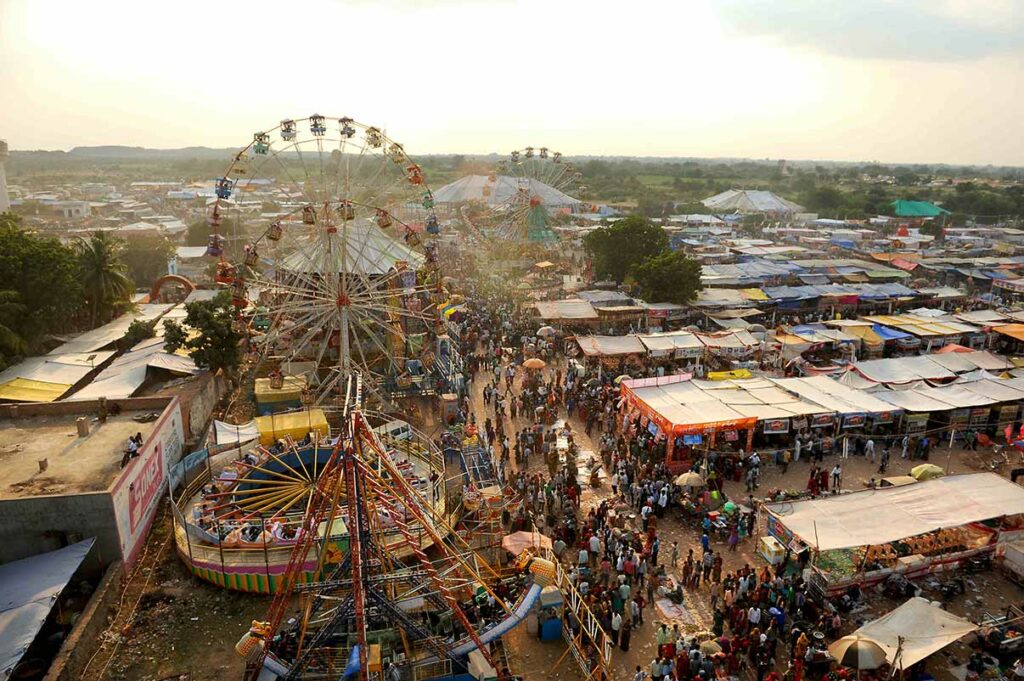
Devpar is also the stronghold of the Rabari Kachhi whose women wear unique earrings called “Nagali” (snakes). This type of jewelry requires stretched earlobes, a procedure that begins in childhood by inserting wooden plugs into the lobes. These Nagalis are worn from the wedding ceremony onwards and are never taken off again.
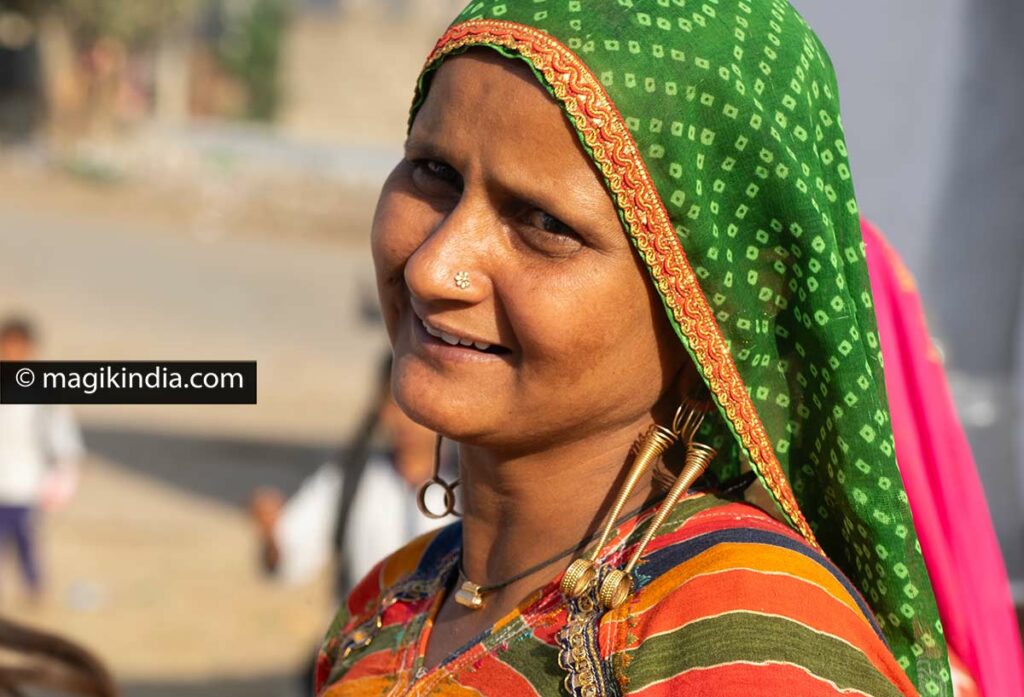
Rabari Kacchi women are also renowned for their elaborate embroidery, the most important pieces of which resemble true works of art. Most of the creations include the work of abblas (small round mirrors) with different embroidery stitches such as chain stitching, to name but a few.

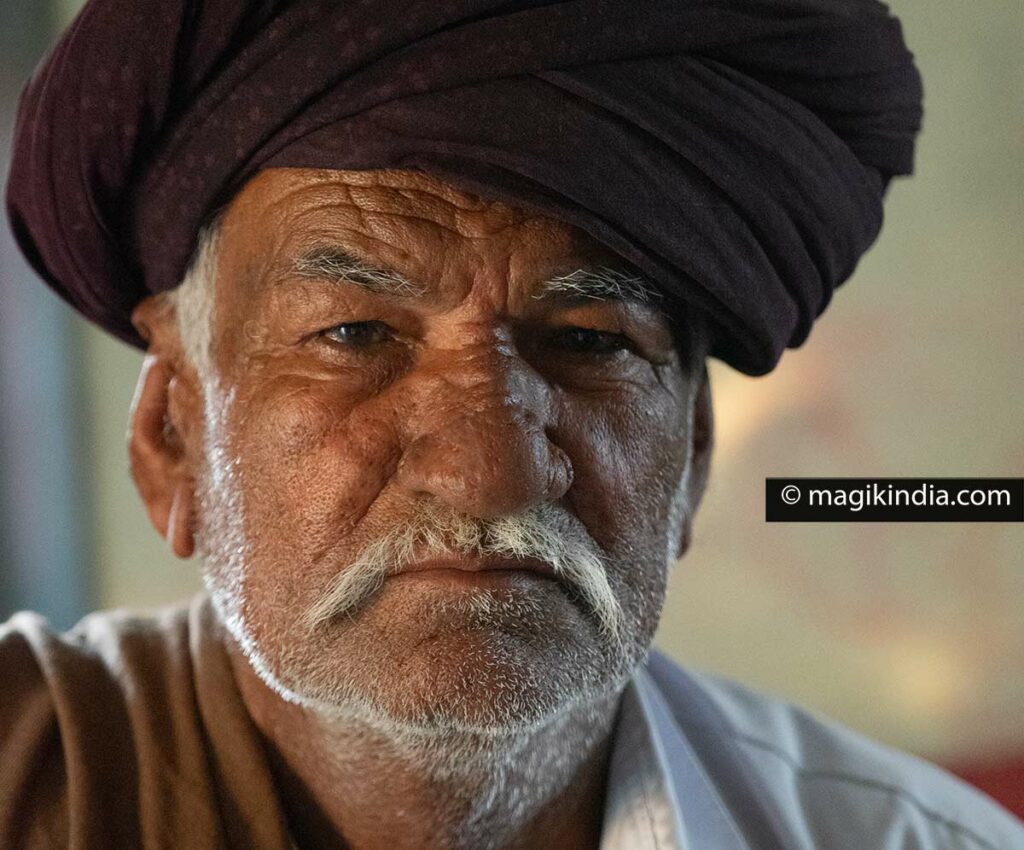
The men of the Rabari Kacchi community are distinguished by sober traditional clothing, a brown turban and an immaculate white outfit common to all Rabaris communities.
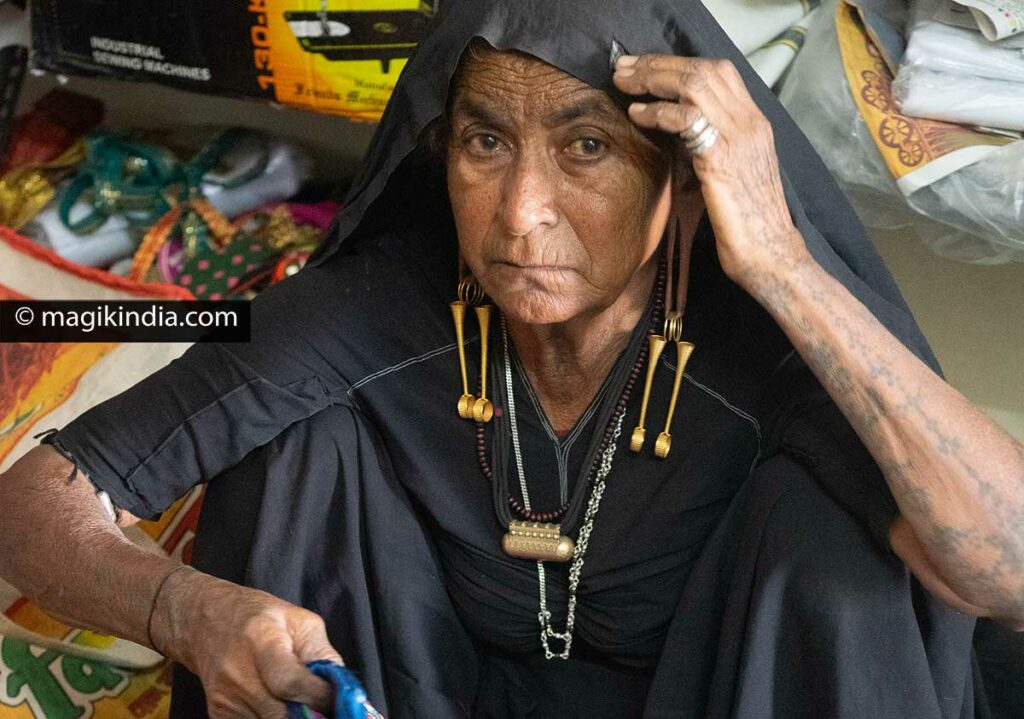
And if you want to stay a little longer around Devpar, I advise you to stay at DEVPUR HOMESTAY, a little gem of a mansion run by the heirs of the Jadeja Thakurs of the region…
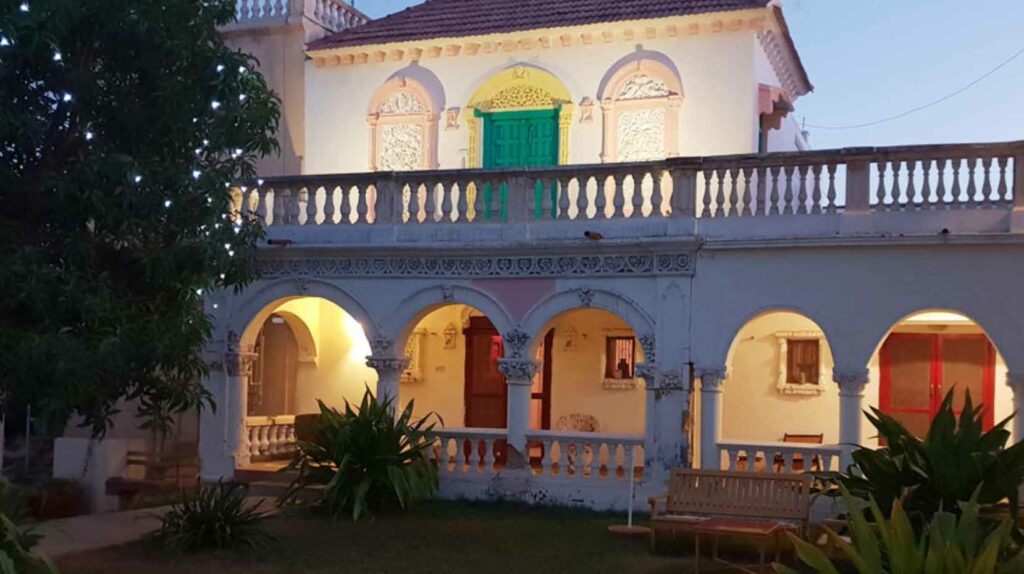
VISIT GUJARAT WITH US!

